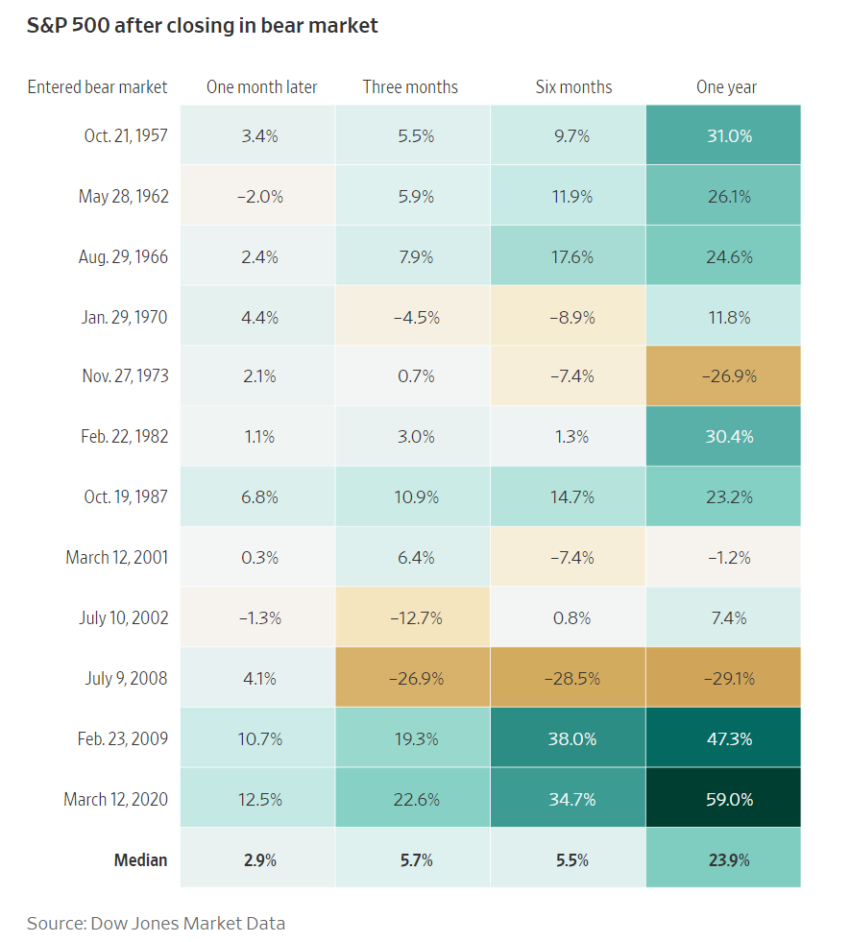There should only be one reason why anyone would dislike a bear market – and that is if you are on the verge of retirement or old enough to not be able to wait for the next up cycle.
If you are young and time is on your side, this bear market is right for you.
A bear market presents a good opportunity to average down on good companies at a discount, which will in turn increase the chance of your return on investment over time.
Think about it this way.
Since we all already know that a bear market always precedes a bull market, would you rather start investing in a bull market or a bear market?
Sure, some may argue with a valid reasoning that it is sometimes better to wait a little and get an even better entry price, but that’s still going to evenly average your costs at the end of the day.
Even if we get the timing wrong at the worst possible entry, for instance invested at the pre-recession peaks, you will still get to make profits based on historical evidence. You just simply need to wait for the next cycle which can take up to 10-years. But if you consistently put down money during a bear market and continue to average in, your break-even point should be much faster.
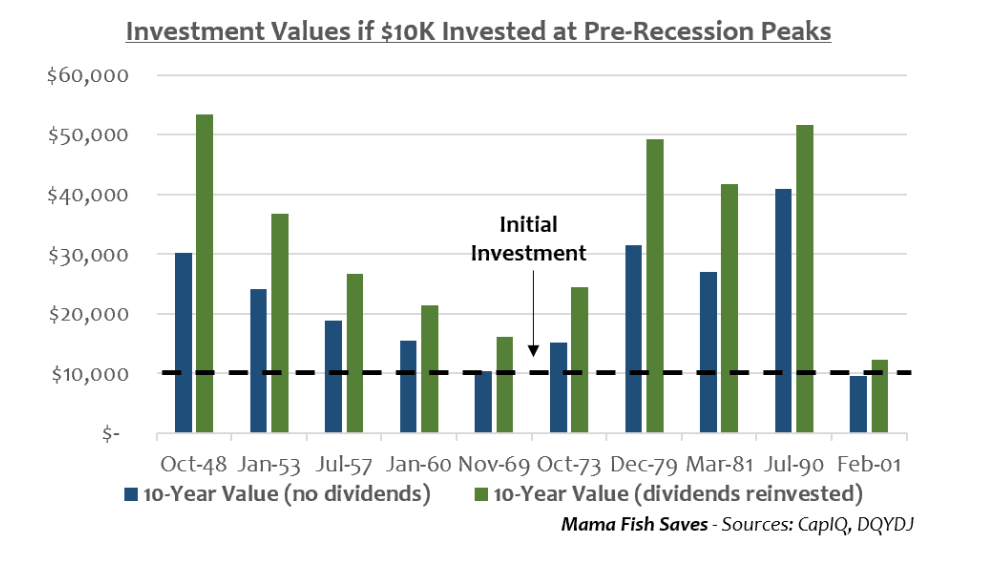
In fact, I would argue that the recovery is usually much faster.
Based on the past historical evidence after S&P entered into a bear market, the market usually recovers within the next 3-6 months, and are usually mostly green after a year later. The only exception was during 1973 and 2008 when the impact is more severe and it needed more time to recover. But it eventually did too.
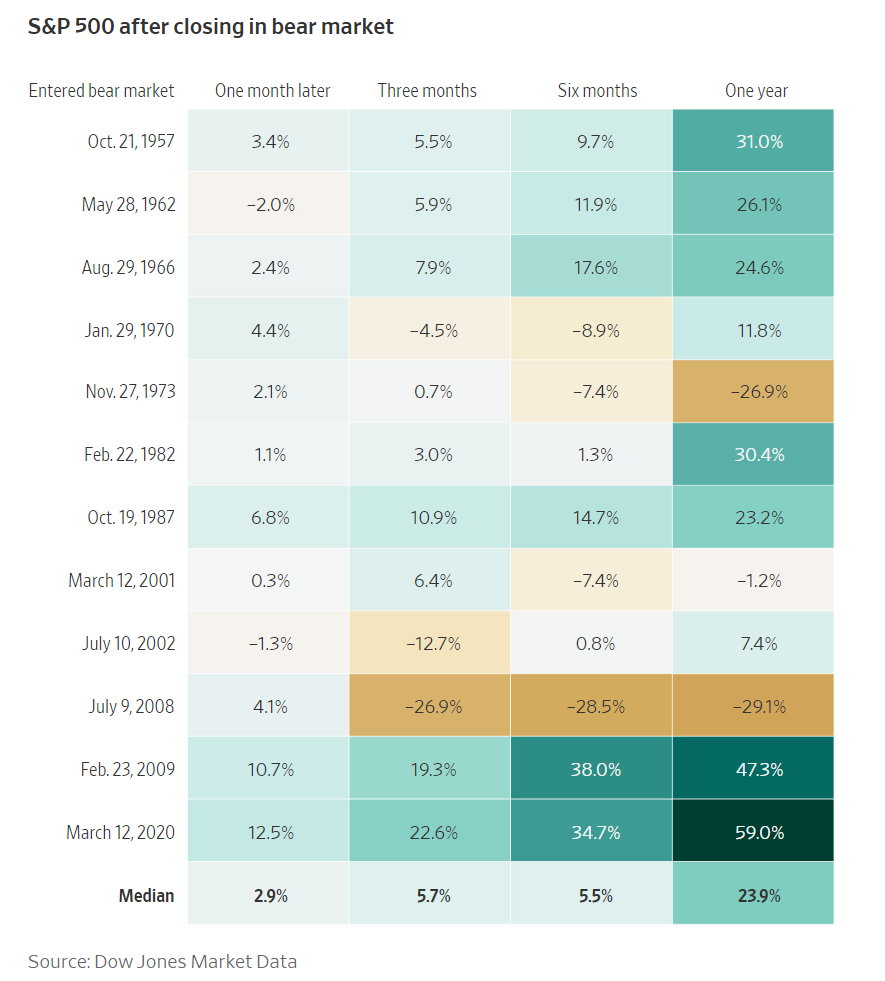
How Long Does It Take For A Bear Market To Bottom Out?
As an investor, we are not in the business of predicting the market or when the stock market will bottom.
Our goal is to eventually improve our rate of investment return over time – and that is done through investing during uncertain times like this, buying good companies at a discount and screen for valuation.
Based on past historical bear market, the market tends to bottom out from the peak to trough on an average of 351 days (~ almost a year) before then the start of the new bull cycle. There are some days which are shorter, and some days which can take longer, but on average, it should not take more than 2-3 years.
Today, the S&P is probably 5-6 months down since it hits the peak at the start of the year.
Since we do not know how long the market may choose to bottom out, my strategy is to keep buying and allocate funds each month, and wait for the economy to recover. Meanwhile, the business continues to run – increasing key operating metrics and generating free cash flow every single quarter.
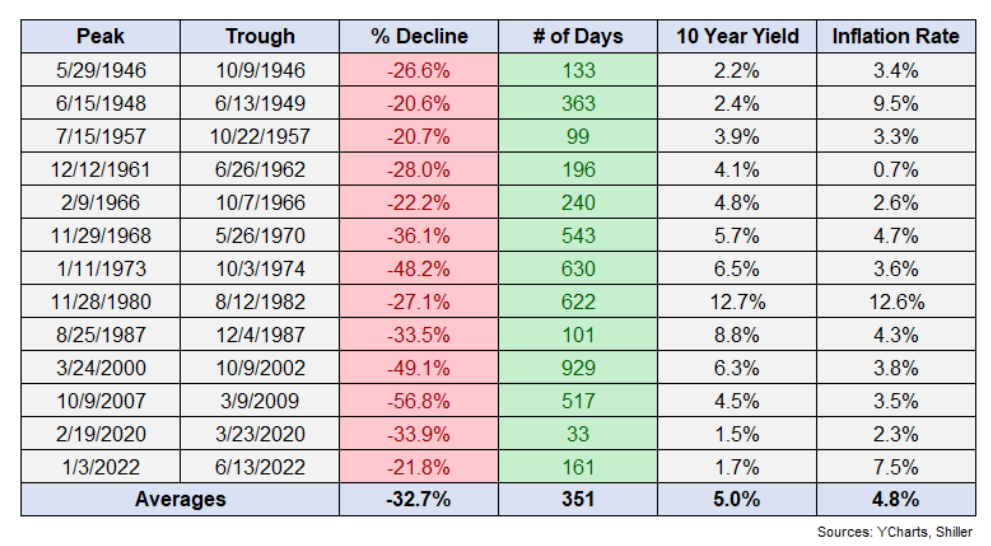
Is The Stock Market Expensive Right Now?
The market has reverted to the long term 10-years mean at about 15-16x since hitting the peak earlier at the start of this year.
We have not gone into compelling buy territory but it is not considered expensive either.
As with everything, the key metrics is still on earnings, so if companies can continue to keep up with earnings, then the market will be cheaper as price movement continue to head southwards. Otherwise, we may see similar P/E ratio if both continues to go down.
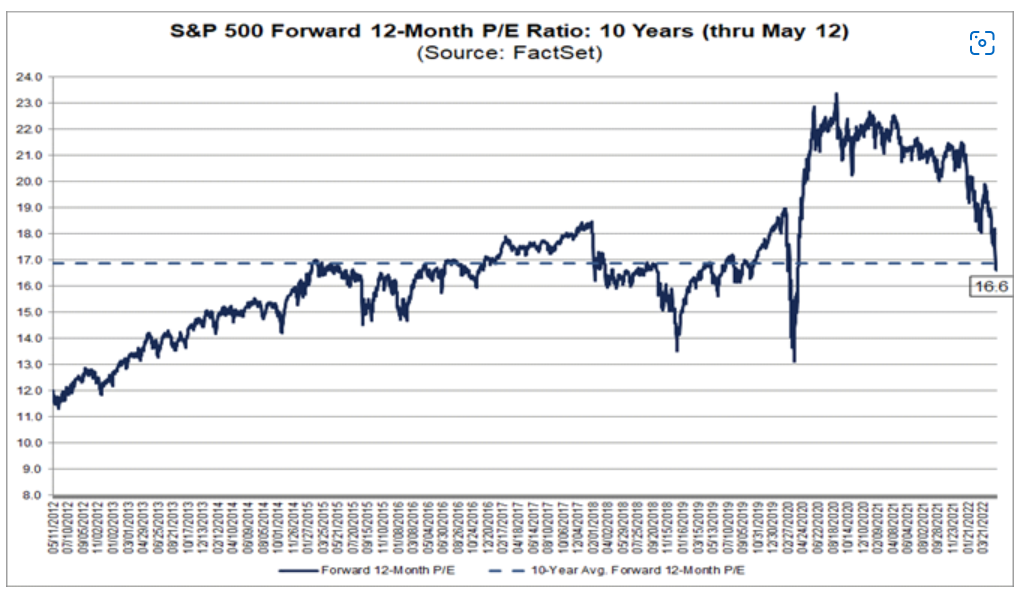
Conclusion
As mentioned at the beginning of the article, if you are young, working and at the stage of accumulating wealth, then you shouldn’t fear or hesitant to invest during the bear market.
While a bear market may signal falling stock prices and the possibility of a recession coming, it can actually be a good time to pick stocks because you can get them at a discount.
The bear market was and will continue to be one of the best times to invest and increase your investment return over time because you are getting to purchase more units of shares in a company at a lesser cost.
If time is on your side, you should embrace a bear market moment.
I have also started using more of my social channels to post ideas and thoughts in recent weeks so if you are interested, you may follow me at my Facebook, Instagram or Twitter profile here.

